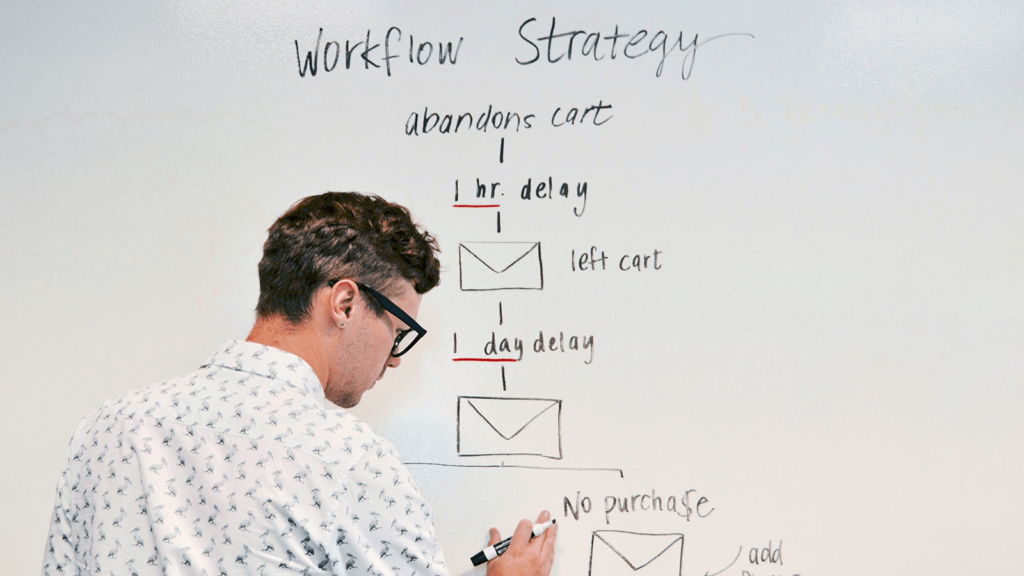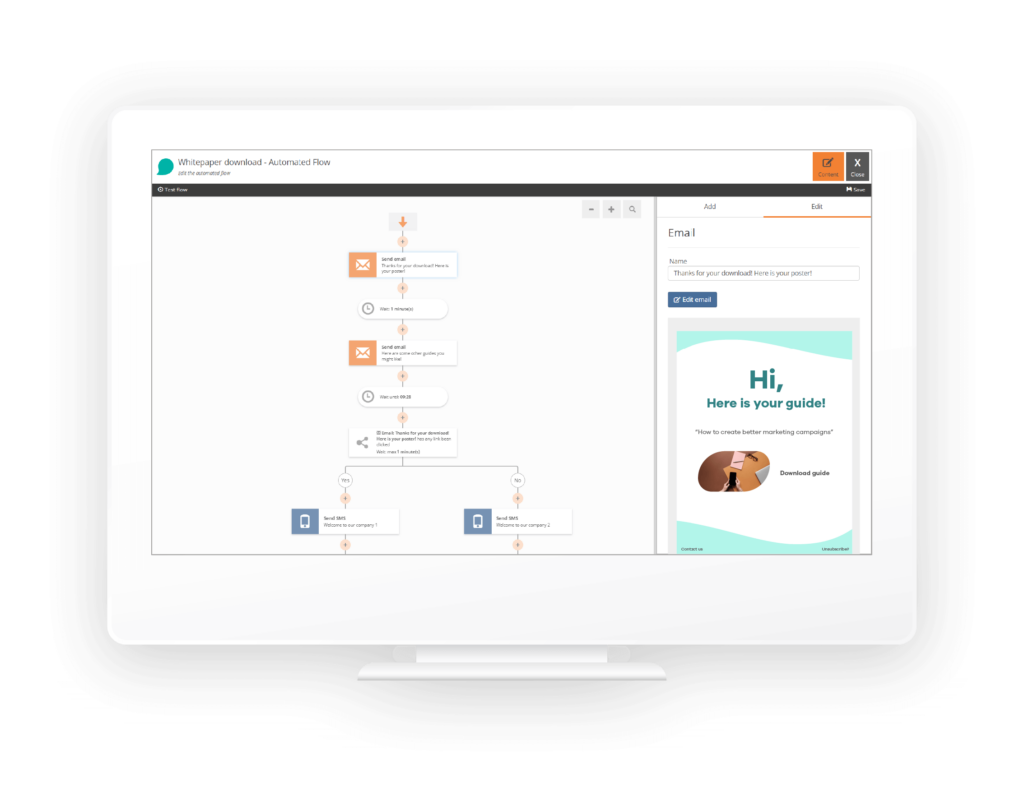Marketing automation for newcomers – 5 basics to successful automated workflows

A common misconception about marketing automation is that its main function is to augment the capabilities of a marketing team. While this might be one of its benefits, it’s important to recognise marketing automation as a tool designed to significantly enhance the customer experience. When thoughtfully implemented, this tool operates tirelessly around the clock to cater to the evolving needs of your customers. Having that kind of capabilities in addressing your customers needs can become a formidable advocate for your brand and overall business success.
Here’s five insights into how you can use a marketing automation tool to enhance your customer journey!
Want more answers to why you need a marketing automation tool? Download our poster, it’s free!
What is marketing automation?
At its core, marketing automation is a tool designed to guide both potential and existing customers on tailored customer journeys through your sales funnel. Marketing automation goes beyond traditional marketing tactics by using the power of technology to deliver a personalized experiences to the recipient. Normally, these kind of automated interactions are sent from email marketing platforms, but the scope of marketing automation extends far beyond just e-mail and includes a variety of communication channels such as text messaging, social media and other web-based platforms.
The true beauty of marketing automation lies in its flexibility and adaptability. It can be a targeted sequence of two to three emails, each containing content crafted for a specific, small audience segment. Or it can evolve into a more complex web of interconnected activities, seamlessly integrating both internal and external communication channels. This kind of flexibility allows businesses to tailor their approach based on their unique needs and resources.
But don’t be afraid of the percieved complexity of marketing automation. It’s important to remember that simplicity can often give great results and a “less is more” approach can be surprisingly powerful!
Check out our marketing automation tool!
Automated workflows connect the dots in the customer journey
Marketing automation works by using triggers and actions in a pre-made flow for the recipient. When it comes to for instance e-mail, it enables the marketing automation tool to split up your audiences depending on their interactions and send them off on different paths in the flow, as well as improve workflows in-house. Here are some examples on what triggers and actions can be for marketing automation:
Triggers – Something happens, or a condition is true:
- Someone signs up for newsletter subscription
- A customer downloads a product catalogue
- A lead is marked as qualified by marketing
- Support department closes a service case
- A subscriber opened but did not click the welcome e-mail
Actions – What activity is triggered by the current event:
- New subscriber receives a welcome e-mail
- Sales are notified through an e-mail about the hot lead
- Customer receives an e-mail asking how their support-experience was
The examples could go on forever, but hopefully these give you an idea. As you may notice, automation is not solely a customer interaction-tool. Rather, connecting the dots between departments is what will bring you, and your customers, extended value.
The five key elements of marketing automation workflows
Marketing automation strategies should originate from the customer
The buzz around new technology can be distracting, but the key is to always start with how it can help your business evolve in the right direction. In the realm of marketing automation, it’s easy to get caught up in the capabilities of the tools at your disposal. However, your focus should steadily remain on the customer and what issues it might solve. Begin by mapping out your current interactions with customers, considering not just the external communications but also the internal processes that occur before and after these interactions. This comprehensive understanding forms the backbone of a successful automation strategy, making sure that every step is aligned with your customer’s journey and their expectations.
Refining your content for maximum impact
It’s vital to remember that the effectiveness of marketing automation depends on the quality of your content. Simply automating your processes isn’t enough if the content circulating inside the process isn’t compelling and interesting. The key to success is to segment your audience and tailoring your content to their previous engagements and interactions with your brand. Predicting exactly what will resonate with each segment can be challenging, but using an educated guess based on your understanding of your audience can guide you in the right direction. Remember, in digital marketing it’s important to test and reiterate to refine your approach and validate your strategies.
Less is more
There’s a common misconception that being able to automate more means you’ll get more efficiency. However, this isn’t always the case. Over-automating can lead to a lack of focus on what truly matters, your customers. A better approach is to select specific customer touchpoints that would benefit from automation and enhance the overall customer experience. Starting on a smaller scale allows for better evaluation and incremental improvements over time, rather than overwhelming both your team and your customers with complex automated systems. Sometimes, less is more!
Make sure your automated campaigns feel personal
In an era where automation is increasingly part of our daily lives, personalization remains a cornerstone of effective marketing. Your customers need to feel that they’re interacting with real people, not robots. This human touch is what keeps your communications out of their trashbin and impacts your brand’s perception in a positive way. Each automated interaction should be thoughtfully crafted to maintain this personal connection with its recipient.
Integrate automation with your customer data
For your marketing automation to be truly effective, it needs to be linked with your customer data. Working with data sets across different platforms, like sales and email marketing, can lead to confusion and a loss of control. Fortunately, many CRM systems offer marketing automation tools as part of the system or integrations with external platforms. Before diving into building your automated workflows, it’s worthwhile to thoroughly explore these options to make sure the marketing automation you’re creating is a smooth and integrated solution that leverages your customer data effectively.
Marketing automation is powerful if done right
Marketing automation is a powerful tool to grow business, boost engagement and increase revenue, but it is not a quick fix. Start in a smaller scale and focus on the customer experience, and don’t look solely on external communication when thinking about what you could gain from automation. Then, as always, trial and error is your way forward. Luckily, the technical part of marketing automation is easier than ever. Our marketing automatio tool, Automated Flows, comes with an intuitive environment and visual steps that can make anyone become a marketing automation expert in no-time.

Discover the benefits of marketing automation with Automated Flows. Use your data in Lime CRM to create automated marketing e-mails with relevant content to your contacts and create a more personalized experience.
Do you want better e-mail marketing?
There’s no time to waste! Let’s find the solution that will help you get more customers and turn existing ones into loyal ambassadors today.